Stefanos Nikolaidis
Robotic Lime Picking by Considering Leaves as Permeable Obstacles
Aug 31, 2021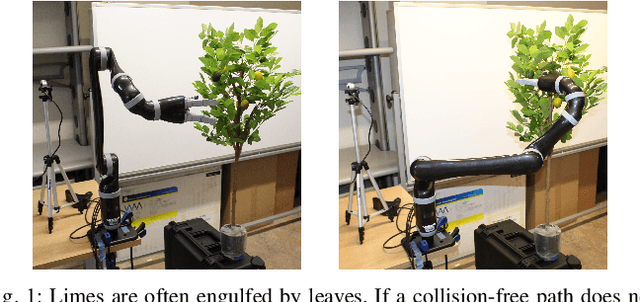
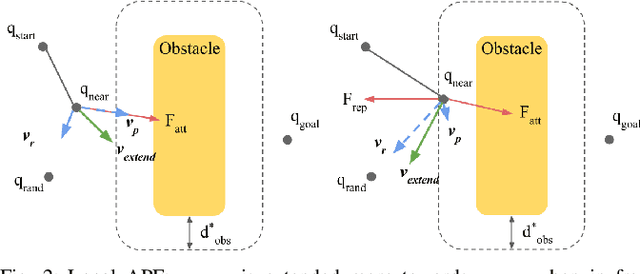
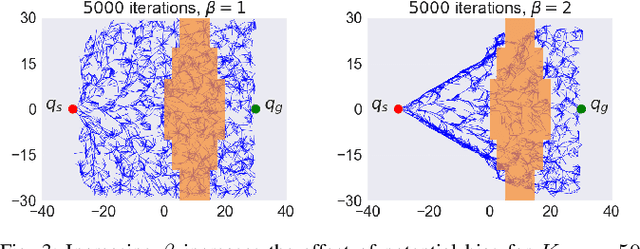

Abstract:The problem of robotic lime picking is challenging; lime plants have dense foliage which makes it difficult for a robotic arm to grasp a lime without coming in contact with leaves. Existing approaches either do not consider leaves, or treat them as obstacles and completely avoid them, often resulting in undesirable or infeasible plans. We focus on reaching a lime in the presence of dense foliage by considering the leaves of a plant as 'permeable obstacles' with a collision cost. We then adapt the rapidly exploring random tree star (RRT*) algorithm for the problem of fruit harvesting by incorporating the cost of collision with leaves into the path cost. To reduce the time required for finding low-cost paths to goal, we bias the growth of the tree using an artificial potential field (APF). We compare our proposed method with prior work in a 2-D environment and a 6-DOF robot simulation. Our experiments and a real-world demonstration on a robotic lime picking task demonstrate the applicability of our approach.
Design and Evaluation of a Hair Combing System Using a General-Purpose Robotic Arm
Aug 03, 2021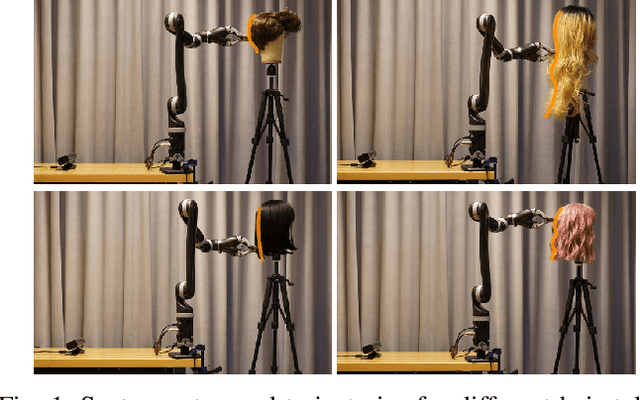
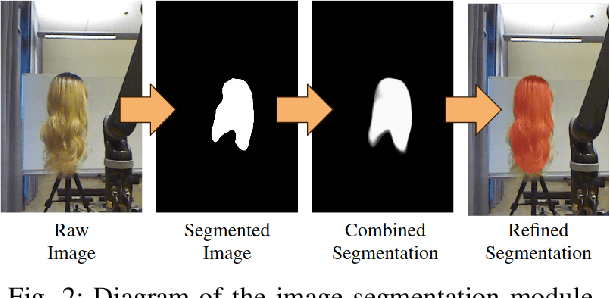
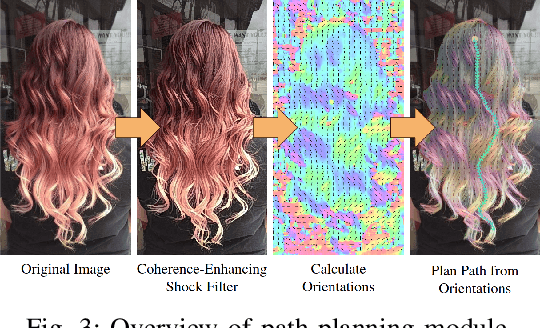
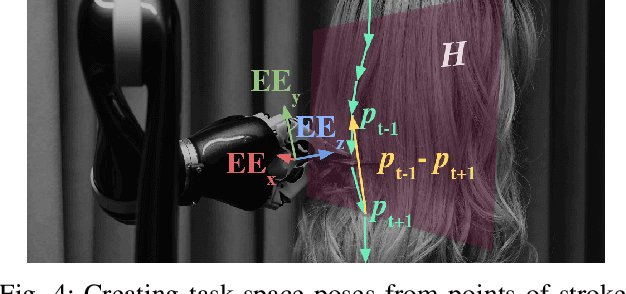
Abstract:This work introduces an approach for automatic hair combing by a lightweight robot. For people living with limited mobility, dexterity, or chronic fatigue, combing hair is often a difficult task that negatively impacts personal routines. We propose a modular system for enabling general robot manipulators to assist with a hair-combing task. The system consists of three main components. The first component is the segmentation module, which segments the location of hair in space. The second component is the path planning module that proposes automatically-generated paths through hair based on user input. The final component creates a trajectory for the robot to execute. We quantitatively evaluate the effectiveness of the paths planned by the system with 48 users and qualitatively evaluate the system with 30 users watching videos of the robot performing a hair-combing task in the physical world. The system is shown to effectively comb different hairstyles.
Personalizing User Engagement Dynamics in a Non-Verbal Communication Game for Cerebral Palsy
Jul 15, 2021



Abstract:Children and adults with cerebral palsy (CP) can have involuntary upper limb movements as a consequence of the symptoms that characterize their motor disability, leading to difficulties in communicating with caretakers and peers. We describe how a socially assistive robot may help individuals with CP to practice non-verbal communicative gestures using an active orthosis in a one-on-one number-guessing game. We performed a user study and data collection with participants with CP; we found that participants preferred an embodied robot over a screen-based agent, and we used the participant data to train personalized models of participant engagement dynamics that can be used to select personalized robot actions. Our work highlights the benefit of personalized models in the engagement of users with CP with a socially assistive robot and offers design insights for future work in this area.
On the Importance of Environments in Human-Robot Coordination
Jun 28, 2021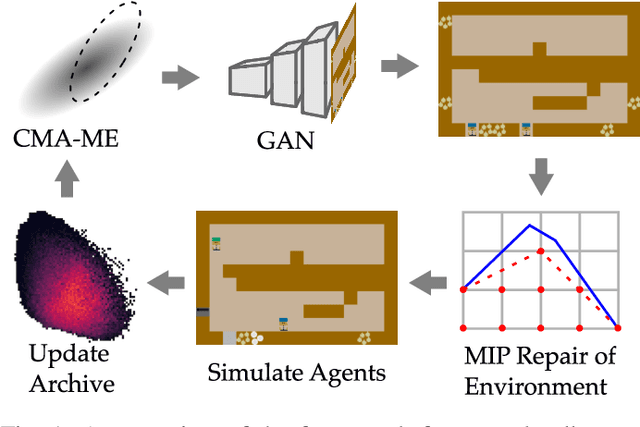
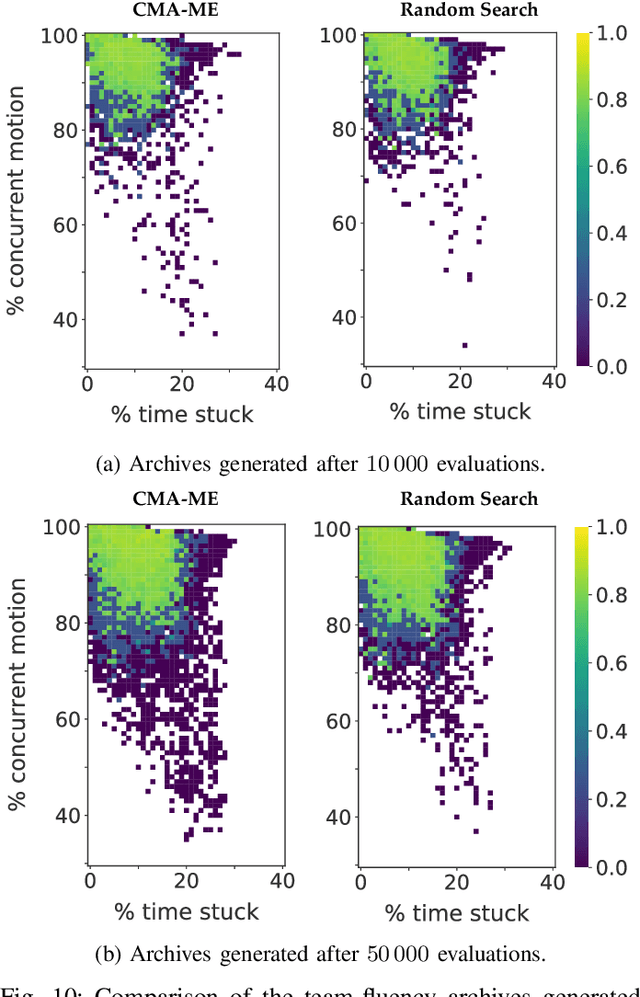
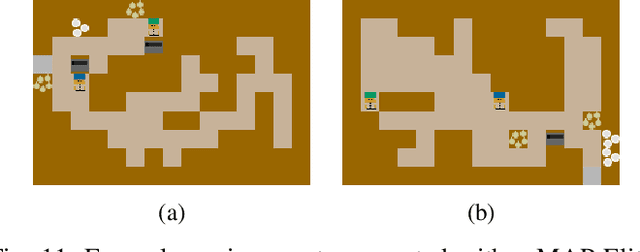
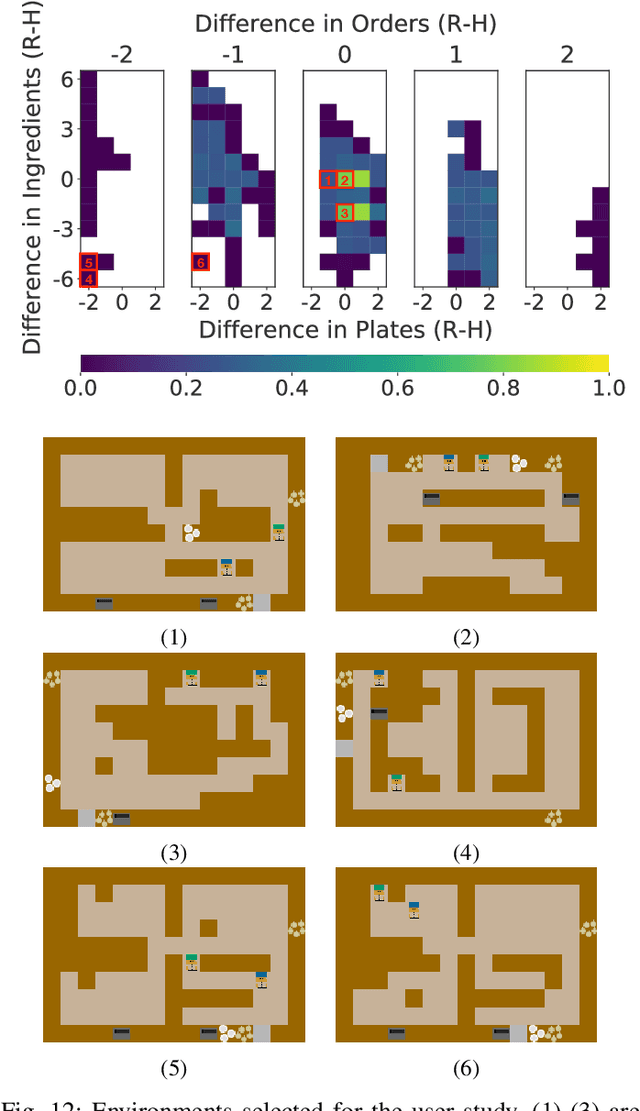
Abstract:When studying robots collaborating with humans, much of the focus has been on robot policies that coordinate fluently with human teammates in collaborative tasks. However, less emphasis has been placed on the effect of the environment on coordination behaviors. To thoroughly explore environments that result in diverse behaviors, we propose a framework for procedural generation of environments that are (1) stylistically similar to human-authored environments, (2) guaranteed to be solvable by the human-robot team, and (3) diverse with respect to coordination measures. We analyze the procedurally generated environments in the Overcooked benchmark domain via simulation and an online user study. Results show that the environments result in qualitatively different emerging behaviors and statistically significant differences in collaborative fluency metrics, even when the robot runs the same planning algorithm.
Differentiable Quality Diversity
Jun 07, 2021

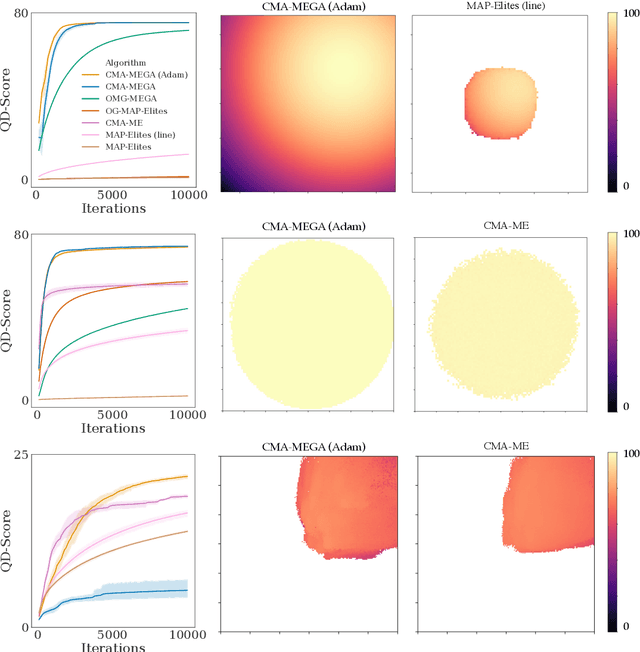
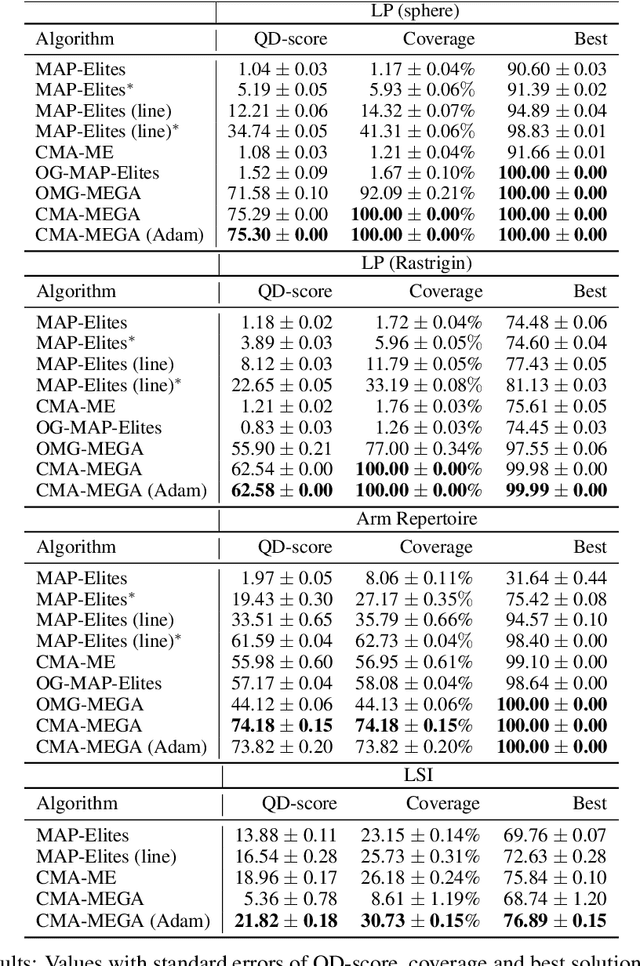
Abstract:Quality diversity (QD) is a growing branch of stochastic optimization research that studies the problem of generating an archive of solutions that maximize a given objective function but are also diverse with respect to a set of specified measure functions. However, even when these functions are differentiable, QD algorithms treat them as "black boxes", ignoring gradient information. We present the differentiable quality diversity (DQD) problem, a special case of QD, where both the objective and measure functions are first order differentiable. We then present MAP-Elites via Gradient Arborescence (MEGA), a DQD algorithm that leverages gradient information to efficiently explore the joint range of the objective and measure functions. Results in two QD benchmark domains and in searching the latent space of a StyleGAN show that MEGA significantly outperforms state-of-the-art QD algorithms, highlighting DQD's promise for efficient quality diversity optimization when gradient information is available. Source code is available at https://github.com/icaros-usc/dqd.
Two-Stage Clustering of Human Preferences for Action Prediction in Assembly Tasks
Mar 27, 2021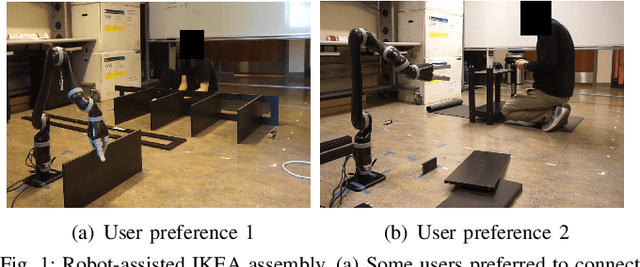
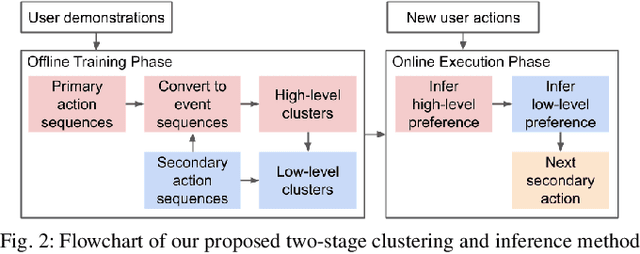
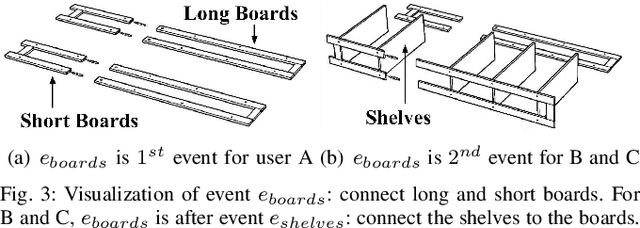
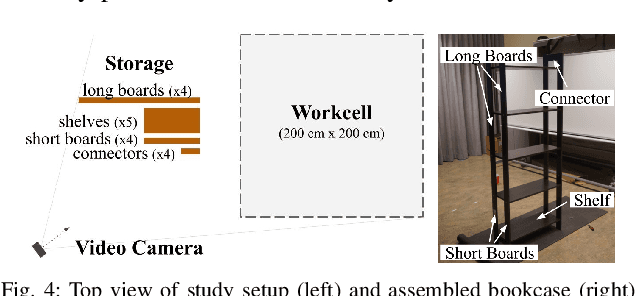
Abstract:To effectively assist human workers in assembly tasks a robot must proactively offer support by inferring their preferences in sequencing the task actions. Previous work has focused on learning the dominant preferences of human workers for simple tasks largely based on their intended goal. However, people may have preferences at different resolutions: they may share the same high-level preference for the order of the sub-tasks but differ in the sequence of individual actions. We propose a two-stage approach for learning and inferring the preferences of human operators based on the sequence of sub-tasks and actions. We conduct an IKEA assembly study and demonstrate how our approach is able to learn the dominant preferences in a complex task. We show that our approach improves the prediction of human actions through cross-validation. Lastly, we show that our two-stage approach improves the efficiency of task execution in an online experiment, and demonstrate its applicability in a real-world robot-assisted IKEA assembly.
Learning from Demonstrations using Signal Temporal Logic
Feb 15, 2021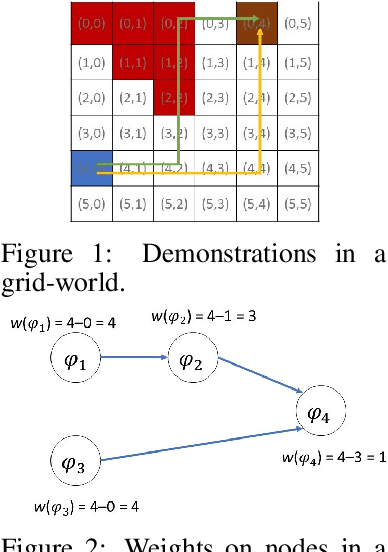

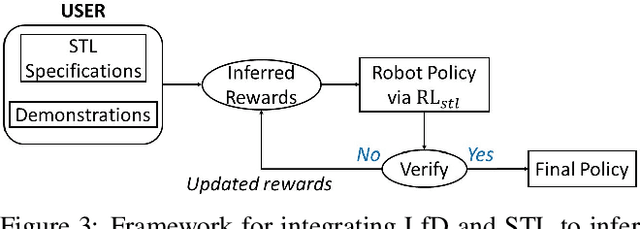

Abstract:Learning-from-demonstrations is an emerging paradigm to obtain effective robot control policies for complex tasks via reinforcement learning without the need to explicitly design reward functions. However, it is susceptible to imperfections in demonstrations and also raises concerns of safety and interpretability in the learned control policies. To address these issues, we use Signal Temporal Logic to evaluate and rank the quality of demonstrations. Temporal logic-based specifications allow us to create non-Markovian rewards, and also define interesting causal dependencies between tasks such as sequential task specifications. We validate our approach through experiments on discrete-world and OpenAI Gym environments, and show that our approach outperforms the state-of-the-art Maximum Causal Entropy Inverse Reinforcement Learning.
A Quality Diversity Approach to Automatically Generating Human-Robot Interaction Scenarios in Shared Autonomy
Jan 13, 2021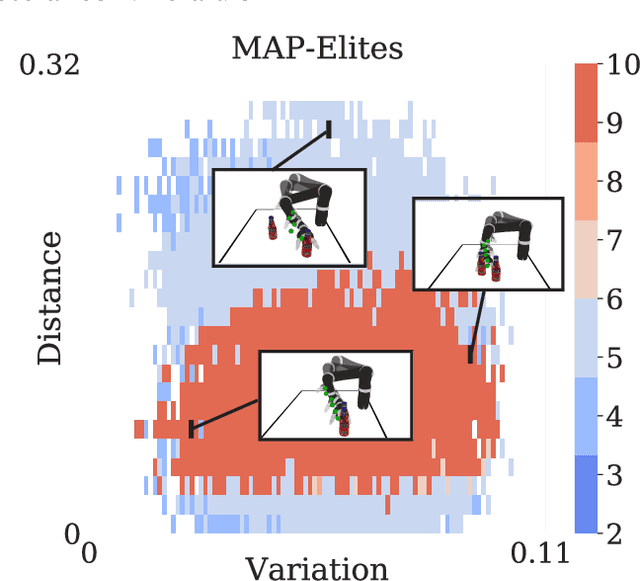

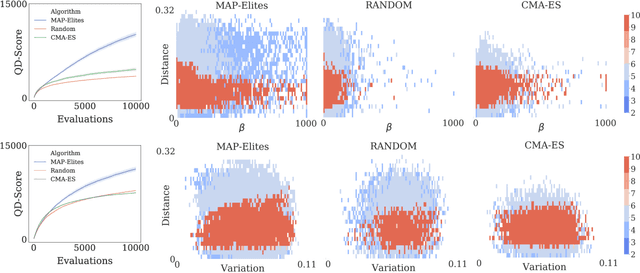
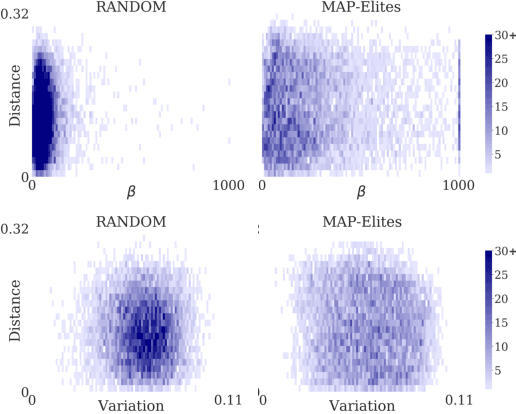
Abstract:The growth of scale and complexity of interactions between humans and robots highlights the need for new computational methods to automatically evaluate novel algorithms and applications. Exploring the diverse scenarios of interaction between humans and robots in simulation can improve understanding of the system and avoid potentially costly failures in real-world settings. We formulate this as a quality diversity (QD) problem, where the goal is to discover diverse failure scenarios by simultaneously exploring both environments and human actions. We focus on the shared autonomy domain, where the robot attempts to infer the goal of a human operator, and adopt the QD algorithm MAP-Elites to generate scenarios for two published algorithms in this domain: shared autonomy via hindsight optimization and linear policy blending. Some of the generated scenarios confirm previous theoretical findings, while others are surprising and bring about a new understanding of state-of-the-art implementations. Our experiments show that MAP-Elites outperforms Monte-Carlo simulation and optimization based methods in effectively searching the scenario space, highlighting its promise for automatic evaluation of algorithms in shared autonomy.
Video Game Level Repair via Mixed Integer Linear Programming
Oct 13, 2020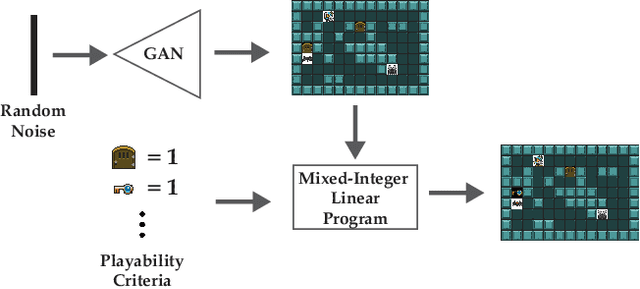

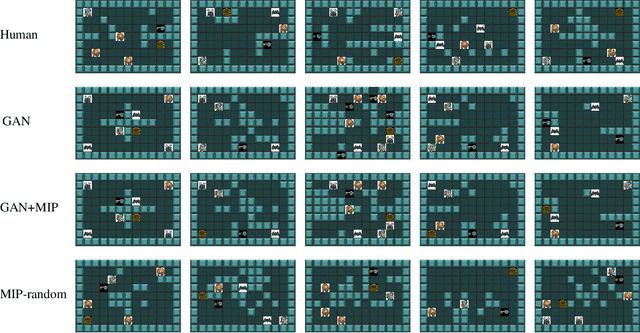

Abstract:Recent advancements in procedural content generation via machine learning enable the generation of video-game levels that are aesthetically similar to human-authored examples. However, the generated levels are often unplayable without additional editing. We propose a generate-then-repair framework for automatic generation of playable levels adhering to specific styles. The framework constructs levels using a generative adversarial network (GAN) trained with human-authored examples and repairs them using a mixed-integer linear program (MIP) with playability constraints. A key component of the framework is computing minimum cost edits between the GAN generated level and the solution of the MIP solver, which we cast as a minimum cost network flow problem. Results show that the proposed framework generates a diverse range of playable levels, that capture the spatial relationships between objects exhibited in the human-authored levels.
Illuminating Mario Scenes in the Latent Space of a Generative Adversarial Network
Jul 11, 2020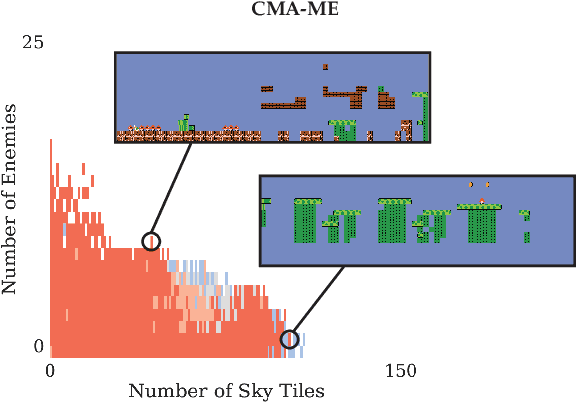



Abstract:Recent developments in machine learning techniques have allowed automatic generation of video game levels that are stylistically similar to human-designed examples. While the output of machine learning models such as generative adversarial networks (GANs) is notoriously hard to control, the recently proposed latent variable evolution (LVE) technique searches the space of GAN parameters to generate outputs that optimize some objective performance metric, such as level playability. However, the question remains on how to automatically generate a diverse range of high-quality solutions based on a prespecified set of desired characteristics. We introduce a new method called latent space illumination (LSI), which uses state-of-the-art quality diversity algorithms designed to optimize in continuous spaces, i.e., MAP-Elites with a directional variation operator and Covariance Matrix Adaptation MAP-Elites, to effectively search the parameter space of theGAN along a set of multiple level mechanics. We show the performance of LSI algorithms in three experiments in SuperMario Bros., a benchmark domain for procedural content generation. Results suggest that LSI generates sets of Mario levels that are reliably mechanically diverse as well as playable.
 Add to Chrome
Add to Chrome Add to Firefox
Add to Firefox Add to Edge
Add to Edge